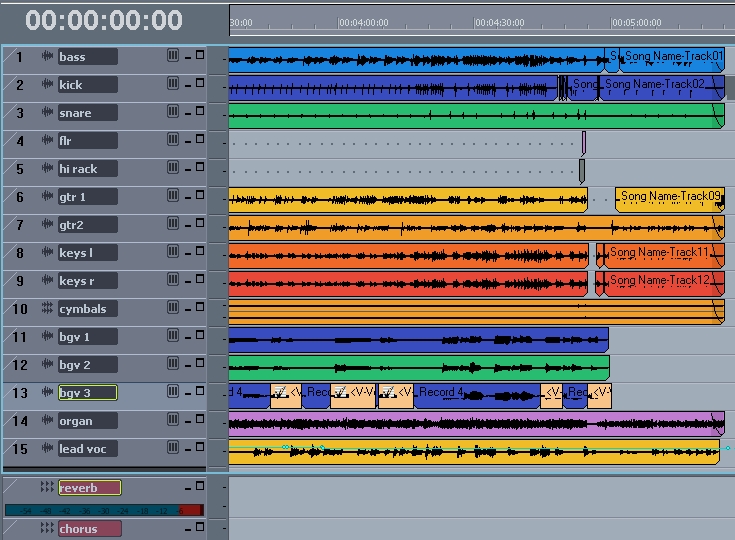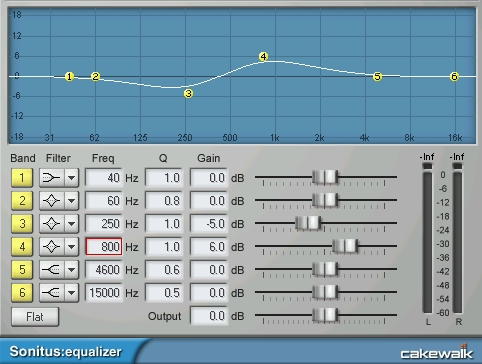One of the most memorable events in The Blues Brothers is the scene where a church congregation dances to the gospel band. The dancers do insanely high flips and cartwheels to this exuberant, joyful music.
I was honored to make a studio recording of similar music played by a top local gospel band, the Mighty Messengers. Here’s a look at my recording process, along with several audio examples in mp3 files.
The Recording
On the day of the session, we set up a drum kit in the middle of the studio. Surrounding the drummer were two electric guitarists, a bass player, a keyboardist and a singer who sang scratch vocals.
Because the bass, guitars and keys were recorded direct, there was no leakage from the drum kit, so we got a nice, tight drum sound. I mic’d each part of the kit. Kick was damped with a blanket and mic’d inside near the hard beater.
We recorded the guitars off their effects boxes, so we captured the effects that the musicians were playing through.
I set up a cue mix so the band members could hear each other over headphones. We recorded on an Alesis HD24XL 24-track hard-drive recorder, which is very reliable and sounds great.
Most of the songs required only one or two takes—a testament to the professionalism of this well-rehearsed band.
A few days later after mixing the instrument tracks, we overdubbed three background harmony singers (each on a separate mic). Finally we added the lead vocalist.
The Mixdown
I copied all the tracks to my computer for mixing with Cakewalk SONAR Producer, a DAW which I like for its smooth workflow, top-quality plugins and 64-bit processing.
Figure 1 shows a typical multitrack screen of the project.
Here’s a short sample (Listen) of the mix of “My Heavenly Father” (written and copyrighted 2010 by Dr. William Jones).
Let’s break it down. Click on each linked file throughout to hear the soloed tracks without any effects, then with effects.
First, the bass track: Listen
To reduce muddiness and enhance definition in the bass track, I cut 5 dB at 250 Hz and boosted 6 dB at 800 Hz. Then the bass track sounded like this: Listen
Note that in Figure 2 this EQ was done with all the instruments playing in the mix. EQ can sound extreme when you hear a track soloed, but just right when you hear everything at once.






















